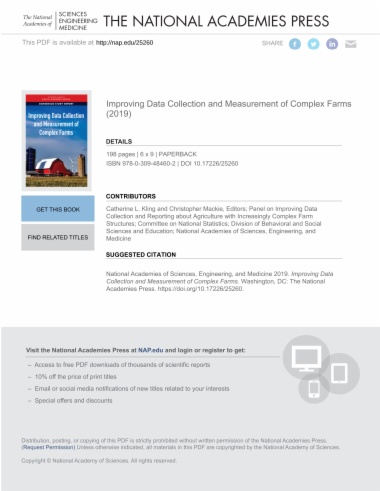

America's farms and farmers are integral to the U.S. economy and, more broadly, to the nation's social and cultural fabric. A healthy agricultural sector helps ensure a safe and reliable food supply, improves energy security, and contributes to employment and economic development, traditionally in small towns and rural areas where farming serves as a nexus for related sectors from farm machinery manufacturing to food processing. The agricultural sector also plays a role in the nation's overall economic growth by providing crucial raw inputs for the production of a wide range of goods and services, including many that generate substantial export value.
If the agricultural sector is to be accurately understood and the policies that affect its functioning are to remain well informed, the statistical system's data collection programs must be periodically revisited to ensure they are keeping up with current realities. This report reviews current information and makes recommendations to the U.S. Department of Agriculture's (USDA's) National Agricultural Statistics Service (NASS) and Economic Research Service (ERS) to help identify effective methods for collecting data and reporting information about American agriculture, given increased complexity and other changes in farm business structure in recent decades.